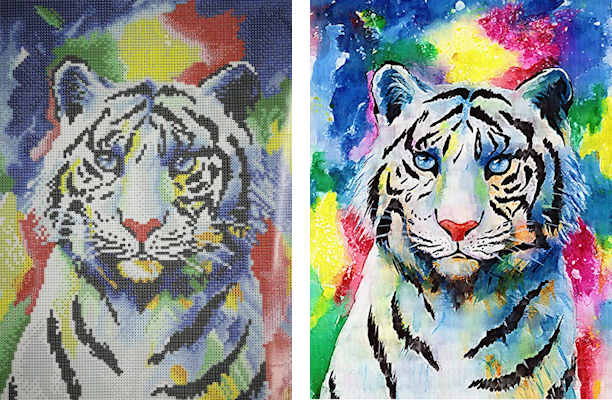 |
| Hands Down - Be fast to hit the Slam-O-Matic when the hands start going down. |
We had Hands Down when I was a kid and it brings back fun memories. Up to four people can play, and the more that play, the more fun it is. Speed will be a must to win this game.
This game consists of cards and the Slam-O-Matic that you see in the image below. There is one joker card and the rest of the cards each have one number printed on it, between 1-10. The Slam-O-Matic is plastic and has four hands that can be pushed down. When a hand is pushed down, the colored tab (of the same color) that you see sticking up in the middle will go down also.
Players take turns drawing cards, trying to make a set of two of the same number. When a player is holding a set, he hits the plastic hand that is in front of him, causing the plastic tab of the same color to go down. You can see this in the image above. The boy in front of the red hand has pushed down his hand and the red tab has gone down also. This cues all the other players to quickly hit their plastic hands. The slowest person's tab will end up on top and he will lose one card. As many times as we hit those hands, hard, the Slam-O-Matic never did break.
Object:
Have the most points at the end of the game.
Set up:
Set the Slam-O-Matic in the middle of the players so that each player is near one hand. Shuffle the cards and pass out four to each player. Place the face-down deck near the Slam-O-Matic.
Play:
The first player starts his turn by taking the top card off the draw pile. If he has a match (two of the same number cards) in his hand he can hit his Slam-O-Matic hand. This is called a "Hands Down". All other players hit their hands as fast as they can. The person who was last to hit his hand (his tab will be on top of the pile in the Slam-O-Matic) must allow the person who is playing to draw one card from his hand. If the player gets another set with this new card, he can go for a Hands Down again. He can keep playing as long as he wins and draws a matching card from another player. Each player can also fake a Hands Down as many times as he wants on his turn by pretending to go for a Hands Down, but not actually touching the plastic hand. Any other person that thinks the player is going for a Hands Down and actually touches or hits his hand, must allow the player to draw one card from his hand.
The joker is never played as a set and is only used in scoring. After the cards run out, players will start picking one card per turn from each other until all cards have been played except the joker. This ends the game. Players count their score - each set is worth one point and the joker is worth 2 points.
Try this:
- Work
on visual discrimination, eye-hand coordination, manual dexterity,
shuffling/dealing/fanning cards, quick reflexes, executive functioning
skills, process skills, socialization skills, play and leisure
exploration and participation
In the box: 1 Slam-O-Matic, 41 cards
If you are interested in purchasing this game or just want more information, click on the image below.







